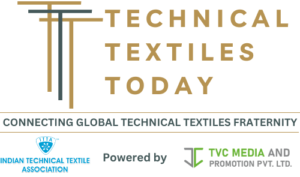Flexible printed hybrid electronics (FHE) is a growing market for the textiles industry. LOPEC, the annual conference and trade show held in Munich each Spring is a showcase for innovation.
LOPEC 2023 was held at the ICM – International Congress Center Messe München from February 28 to March 2 with 168 exhibitors from 25 countries and more than 2,300 visitors from 43 countries setting an exhibitor record according to Dr. Martin Lechner, executive director at Messe München.
The conference brought together a mix of vertical and horizontal markets that few trade shows can manage to attract. To give an idea of the range, speakers included Holst, Sun Chemical, Brilliant Matters, ICI – Printability and Graphic Communications Institute, as well as BMW, Pirelli and Microsoft. Exhibitors were focused on technology and material manufacturers, research institutes and universities. Textiles have a growing presence within the ecosystem. This is being driven by market demands such as transport and wearables, as well as advances in technologies that are drawing fibres and textiles further into the FHE ecosystem.
One of the challenges in printing electronics onto textiles is the fabric’s rough texture – relative to some other substrates such as paper or plastic. The surface morphology is dictated by the fibre structure and the fabric’s form in addition to any stretch. The surface texture can require a thicker coating that brings implications for the comfort, flexibility and cost.
Annika Gambke from the Textile Research Institute Thuringia-Vogtland (titv) discussed powder coating and cold plasma spraying technologies in her presentation as new coating techniques with promising potential. Powder coating is applied as a loose powder mixture containing a binder polymer and functional pigment to produce broad or fine structure with the laser fixation process allowing for a high degree of design flexibility. A good range of textile substrates can be used, which is not always the case in printed electronics using textiles.
The functional pigments that can be applied include electrically conductive, after-glow, magnetic and electroluminescence. Cold plasma spraying technology uses very small particles (<20mm) to enable low jet temperatures. The advantage of this process is that no vacuum or wet chemical treatments are used. It also offers a high deposition rate and freedom of design with precise and diffuse lines possible. Compositions can also be layered to apply different functionalities and it is possible to coat ready-made clothing pieces with conductive webs and foils allowing a good level of flexibility in connecting LEDs. Both coatings have achieved positive results in kink resistance as well as torsion and bending as well as laundry tests.
